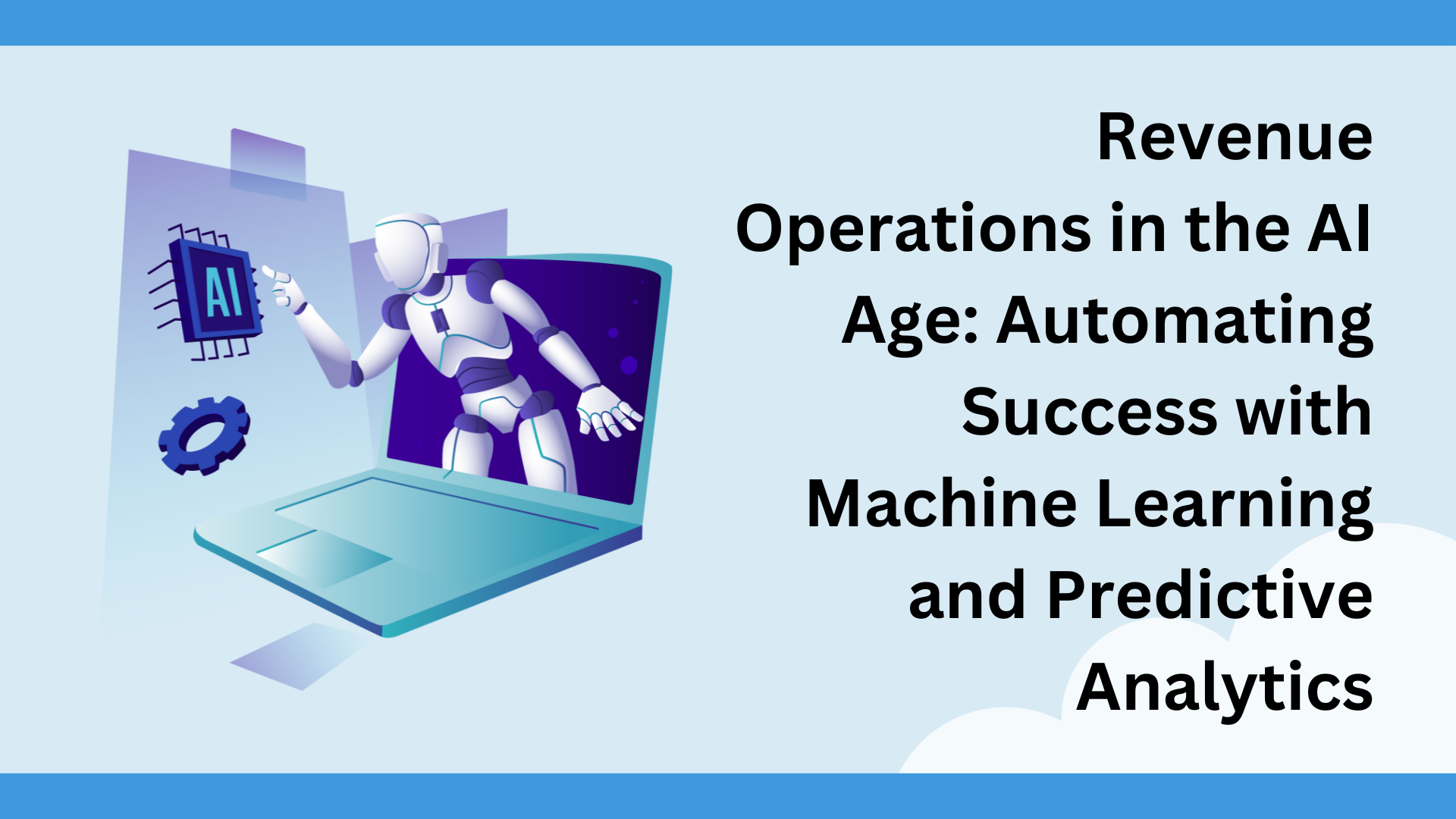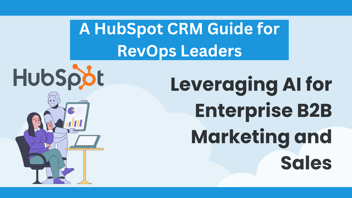RevOps is all about bringing sales, marketing, and customer success teams together to boost revenue. In the past, this required countless spreadsheets, typing in data by hand, and more guesswork than anyone liked to admit. Now, the days of relying on gut feeling and manual processes to drive sales are gone. Thanks to the power of artificial intelligence (AI), machine learning (ML), and predictive analytics, businesses are automating their way to success. These technologies are transforming the way RevOps functions, helping teams work smarter, not harder, and offering insights into revenue growth.
Machine Learning & Predictive Analytics: The Dynamic Duo
While the terms machine learning (ML) and predictive analytics are often used interchangeably, they serve distinct but complementary roles in RevOps. Together, they supercharge the decision-making process. AI & Machine Learning improves processes by learning from past actions and continuously refining results over time. It can improve customer segmentation, optimize lead scoring, and enhance marketing campaign targeting. The more data you feed into ML models, the better they get.
Predictive Analytics takes historical data and turns it into foresight. It helps RevOps teams anticipate customer needs, sales trends, and even potential issues before they occur. From forecasting revenue to predicting churn, predictive analytics helps teams allocate resources where they’ll have the most impact.
AI in Revenue Operations
Enter AI and machine learning, which are shaking things up by handling the heavy lifting when it comes to repetitive tasks and data analysis.
Automating Tedious Tasks:
AI in RevOps automates repetitive tasks like lead scoring, data management, and email campaigns, freeing teams to focus on closing deals. AI-driven chatbots handle early customer interactions, qualifying leads and passing them to sales without delays.
Real-Time Data, Real-Time Decisions:
Artificial Intelligence offers real-time insights into customer behavior, sales performance, and more. Predictive analytics goes further, forecasting trends and identifying leads most likely to convert. This allows RevOps teams to stay proactive and optimize their efforts before problems arise.
Stay Ahead with Predictive Analytics in RevOps
Predictive analytics uses historical data to forecast future trends and behaviors, empowering RevOps teams to make proactive, data-driven decisions. Here's how it can transform your RevOps strategy:
- Improved Forecasting: By analyzing past sales data and customer behavior, predictive models provide accurate sales and revenue forecasts. This helps teams allocate resources efficiently and plan for future market trends.
- Better Lead Scoring: Predictive analytics helps identify leads most likely to convert by analyzing patterns in customer behavior, allowing sales teams to focus on high-potential opportunities, increasing conversion rates.
- Customer Retention: Predictive models can analyze customer engagement data to predict churn, enabling businesses to take proactive measures like targeted outreach or promotions to retain valuable customers.
- Optimized Marketing Campaigns: By forecasting customer preferences and behaviors, predictive analytics helps marketers tailor their campaigns, choosing the right content, timing, and channels to maximize engagement and ROI.
- Efficient Inventory Management: Predictive analytics forecasts demand, allowing businesses to manage inventory more effectively, avoid stockouts, and reduce excess stock, directly improving profitability.
Companies that adopt these technologies will be in a prime position to optimize their operations, enhance customer experiences, and, most importantly, drive more revenue. The future of RevOps is already here, and it's powered by AI. So, if you want to automate success and turn data into a growth engine, now is the time to embrace it in your RevOps strategy.





Leave a Comment